What cannot be heated in the microwave: list of prohibited dishes and foods
Before using a new technique, it is recommended that you first carefully study the instructions. The manufacturer always warns which dishes should not be placed in the microwave. First of all, crystal, melamine and metal are contraindicated for it. If containers made from the listed materials are placed inside, they may deteriorate or damage the device itself. We suggest that you familiarize yourself with the full list of prohibited utensils and products, and also remember the general precautions when cooking in a microwave oven.
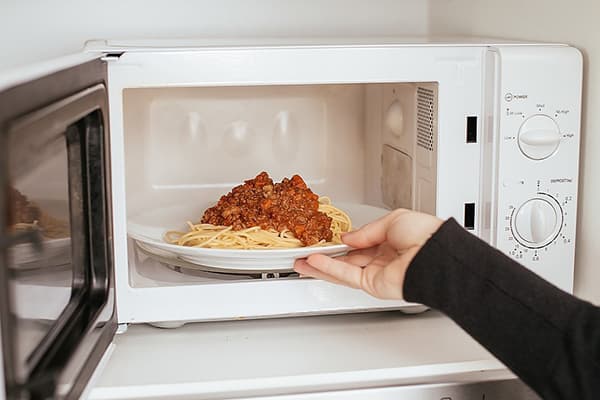
How does a microwave oven work?
Surprisingly, the microwave oven is older than many people alive today. It was patented back in 1945 by Percy Spencer, an American engineer. At that time, he worked for the military-industrial company Raytheon and was engaged in the manufacture of radars. One day, absent-mindedly, Spencer placed a sandwich on the switched-on magnetron (an electrical device that generates microwaves) and discovered that it had become hot. The very next year he received a patent for a microwave oven, and in 1947 his invention saw the light of day.
For a long time, microwave ovens caused distrust, were expensive and therefore were not in demand. And even today there are many myths surrounding technology. For example, that microwave radiation allegedly changes the structure of dietary fiber or water, turning them into dangerous carcinogens.In fact, the operating principle of a microwave oven is the dielectric heating of substances containing polar molecules. Microwave energy is not enough to break chemical bonds. Electromagnetic waves cause the movement of molecules, and the resulting friction between them naturally increases the temperature of the substance. In other words, in microwave ovens, normal heating occurs - and nothing more.
Household microwave ovens operate at a frequency of 2450 MHz (within the absorption spectrum of water). The radiation source is a magnetron with a power of 500 W or more. It directs and concentrates high-frequency waves in a metal chamber, where the dishes with food are actually placed for heating or cooking.
Why can't everything be heated in the microwave?
The microwave oven requires special handling and safety precautions. During operation, high-frequency radiation is supplied to the camera, which acts completely differently than the fire that is familiar to many. Microwaves are reflected from the metal, which leads not only to its heating, but also to the appearance of an electric arc (lightning, crackling, discharge). The second taboo for a microwave oven is hermetically sealed containers. Under the influence of electromagnetic waves, moisture evaporates very quickly, which entails an increase in pressure in a confined space and an explosion. Packages, containers with lids, and even foods (eggs and others) can explode.
List of prohibited materials
It is strictly forbidden to put only 3 types of dishes in the microwave:
- Metal. As already mentioned, metal (brass, iron, copper, cast iron, steel) does not transmit microwaves and causes spark discharges. Using such utensils for heating or cooking in the microwave is extremely dangerous!
- Crystal. There are quite a lot of inclusions of lead, silver and other metals in crystal. In the microwave, the material becomes very hot and shatters.
- Melamine. Melamine dishes are very similar to porcelain, but they are inexpensive and very light. Unfortunately, it melts quickly and, by the way, is unsafe for health. It is absolutely not suitable for use in the microwave.
As usual, any rule has exceptions. You can cook in a shallow metal container if you do not turn on the microwave mode - grill, convection, or a combination of both.
It is prohibited to place not only plates, pots and pans made from the above materials in the microwave. It is important to ensure that no spoon or other cutlery is accidentally left in it.
Controversial materials
Some utensils may or may not be suitable for use in a microwave oven. Much depends on the manufacturing technology, additional protective properties, and wall thickness. A special point should be made about the presence of paint and metal decorative elements. Even a completely ordinary-looking dye without shine can contain metal in its composition. Such dishes will become very hot or spark in the microwave, but their contents will remain cold. Coffee mugs and plates with patterns often suffer from this problem.
List of “controversial” microwave cookware:
- Ceramic. Ceramics that are not protected by glaze heat up unevenly and crack when exposed to microwaves. It can be used in a microwave oven only when the glaze completely covers the dish, including the bottom, and there are no slightest chips or cracks.
- Clay, earthenware, porcelain. Like ceramics, clay, earthenware and porcelain are susceptible to cracking.Inside they are heterogeneous and full of internal bubbles. The glaze saves the situation, but still, when cooking, such dishes get very hot. When removing a dish from the microwave, you must definitely use oven mitts to avoid getting burned.
- Bamboo dishes. Manufacturers often mark it as not microwave safe. However, many people successfully heat food in it... up to a certain point. The fact is that bamboo perfectly absorbs water, which evaporates too quickly inside the chamber. Even a slightly damp plate can crack if heated for a long time or at high temperatures.
- Ordinary glass. Glass transmits microwaves better than other materials and can be used to heat food in a microwave oven. However, if the walls of the pan are too thin, it may burst. To avoid this, you should place it in the center, away from the walls of the chamber.
- Plastic. Plastic is not afraid of temperature changes; many people love it because in such a container you can heat food directly from the freezer. However, not all containers are suitable for cooking in a microwave oven. Plastic dishes must have the appropriate microwave symbol and be heat-resistant (withstand temperatures of 130–140 degrees).
- Disposable paper tableware, plastic bags. When contacting hot food, such materials begin to release harmful substances - wax, dyes. Using such containers for cooking is unsafe for health. These are options for extreme cases when you need to quickly reheat or defrost food.
- Foil. Contains metals and does not transmit microwaves well. The only possible use is as a substrate.
What kind of dishes can I use?
- Utensils made specifically for microwave ovens are made from tempered heat-resistant glass. You can cook in it as much as you want, anywhere. Even in a regular electric or gas oven.
- The second recommended option is silicone molds. High-quality silicone allows microwaves to pass through and can withstand temperatures from -40 to +240 degrees.
- It is also allowed to use parchment paper and a special sleeve for baking fish and meat for cooking in the microwave.
What foods cannot be put in a microwave oven?
Dishes are not the only taboo for the microwave. Some products cannot be placed in it:
- eggs in shell (explode);
- milk and fermented milk products (heat unevenly, curdle);
- any products in sealed packaging (explode);
- ready-made infant formula (heats unevenly, curdles)
- mushrooms and chicken (they spoil quickly; when frozen, heating is uneven);
- frozen berries (nutrients disappear);
- honey (at a temperature of 40 degrees the product loses its benefits).
General precautions
In addition to the list of prohibited utensils and products for the microwave oven, it is important to remember several important rules for its use.
What not to do?
- Place the dishes close to the walls of the chamber.
- Cook or reheat in a container that sparks. The appliance must be turned off immediately and the plate removed.
- Allow temperature changes - put dishes from the refrigerator into the oven, remove a hot dish onto a cold or wet surface. The exceptions are plastic and silicone.
- Cook or reheat food in a hermetically sealed container. A hole should be provided for steam to escape.
The microwave makes life easier and faster, but it is important to use it correctly.Initially, you need to choose suitable dishes for it. It is not necessary to buy a new one - a special one. Select old glass plates with thick walls, white ceramics without patterns, heat-resistant plastic, silicone molds, parchment - and you can easily and safely prepare many delicious dishes.
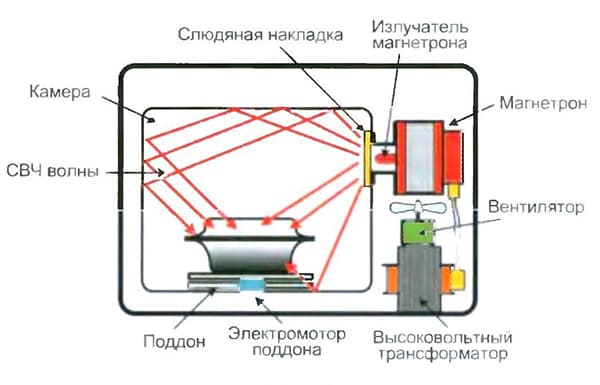
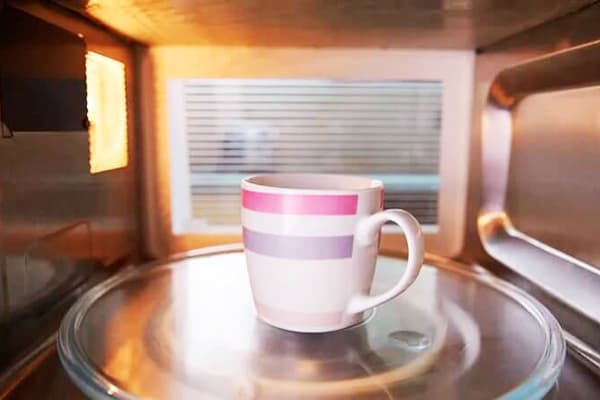
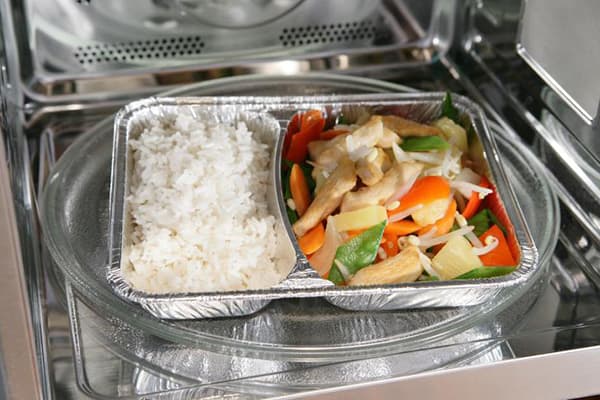

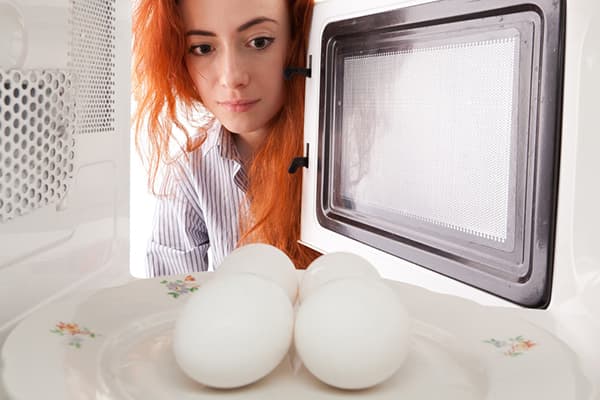
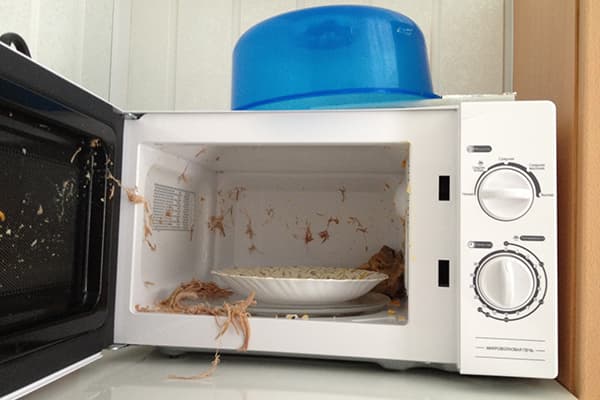
Nice detailed article. Helped me figure out what kind of dishes can still be used to heat food.